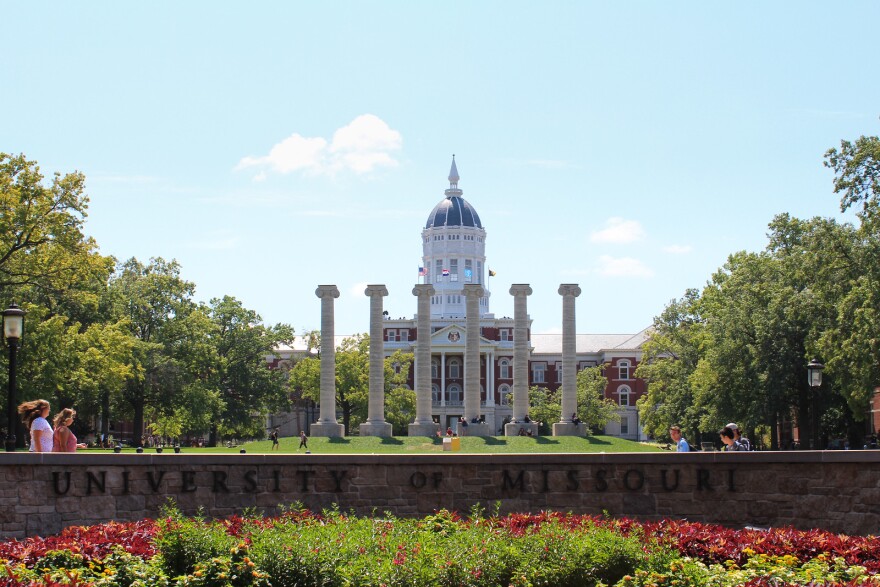The University of Missouri has put on hold its plans to demolish radium-contaminated Pickard Hall while it conducts more tests to decide whether the 132-year-old building must be torn down.
Plans for at least the past five years have been to dismantle the building and remove the radioactive materials inside. Mizzou reluctantly made the decision six years ago after being unable to find a feasible way to eliminate the radioactive contamination.
As required by the federal Nuclear Regulatory Commission, the university then submitted a decommissioning plan with details about safely managing the demolition.
Last year, it withdrew the plan, and the commission agreed to allow further testing.
“The university determined that additional testing is necessary to gain a more thorough understanding of the extent of the contamination,” said Christopher Ave, university director of media relations and public affairs.
“Eventually, we intend to submit an updated decommissioning plan to the NRC, which may or may not involve demolishing the building, depending on these latest findings,” Ave said.
If the building is not demolished, its future on campus depends on testing results and remediation efforts, he said. “But we won’t know that for some time into the future.”
Reconsidering the plan
The university is reconsidering the demolition plan in light of the building’s history and the cost of removing the building and its contaminants, estimated at $12 million.
The historic brick building with its classic Italianate design was built in 1892 and most recently was a classroom building that also housed the Museum of Art and Archaeology.
But in its early years, it was the laboratory of a chemistry professor who extracted and refined radioactive metals from low-grade ore and industrial waste. Widespread contamination led to the closure of Pickard Hall in 2013.
The building’s rich but complicated history is one reason for reconsiderating its future.
“We remain committed to the safety of our campus community.” Ave said. “We are also caretakers of our historic Francis Quadrangle, as well as stewards of Missourians’ investment in our university. Obtaining more data from testing will help us make the best possible decisions about the future of the building.”
The decommissioning plan was drafted in 2023 to explain to the NRC how the university was going to remove radioactive materials from the building. Now that the plan has been dropped, work is underway to extract materials from inside the building and test for radiation contamination behind walls and in other previously inaccessible areas.
The results of this testing will help determine whether the contamination can be removed, Ave said. The work is expected to be completed by the end of the year at a cost of $1.9 million.
The most radioactive places in the building are in the basement, where Mizzou chemistry professor Herman Schlundtconducted the bulk of his radium research in the early 1900s.
There is also considerable residue in the attic, where ventilation chimneys funneled some of the hazardous material, and on the first and second floors.
After a decision is made about either demolishing or containing the site, an updated decommissioning plan would need to be submitted and approved by the Nuclear Regulatory Commission.
History of the building
Pickard Hall is situated on Francis Quadrangle, the square of buildings around the Columns and Jesse Hall. It was originally called the Chemical Laboratory and became one of 20 campus buildings placed on the National Historic Register in 1973.
The building was renamed Pickard Hall after a Greek professor when it became home to the art and archaeology departments in the 1970s.
Schlundt conducted his research on radium and its isotopes in the basement of the building from 1913 to the mid-1930s, refining radioactive waste at a time when the health effects of radiation were not fully understood.
He brought thousands of pounds of radioactive sludge to MU from factories in New Jersey and Chicago that have since become EPA Superfund sites.
Radiation poisoning became a national health scare in the early 1930s, after a lawsuit was filed against a chemical company by factory workers who had been exposed to radium.
Schlundt also used himself as a subject to assess the risks of radium. He drank water spiked with a known dose of radium to find out how quickly it would stop showing up in his urine.
He later began to suffer health problems likely related to his research and died of uremic poisoning, a result of kidney failure, in 1937. He was 68.
Tests since Schlundt’s research have discovered that radioactive dust from his research found its way into pipes, ducts and cracks in the floor.
After the building closed, the art history and archaeology departments moved to nearby Swallow Hall, and the museum collection was transferred to a wing of Ellis Library.
One thing left behind was “Abstract Variation No. 5,” a metal sculpture created in 1977 that still stands outside Pickard Hall.
The Missourian previously reported that the 2-ton sculpture by Ernest Trova may need to be relocated, but Ave said no decision had been made about the sculpture.





